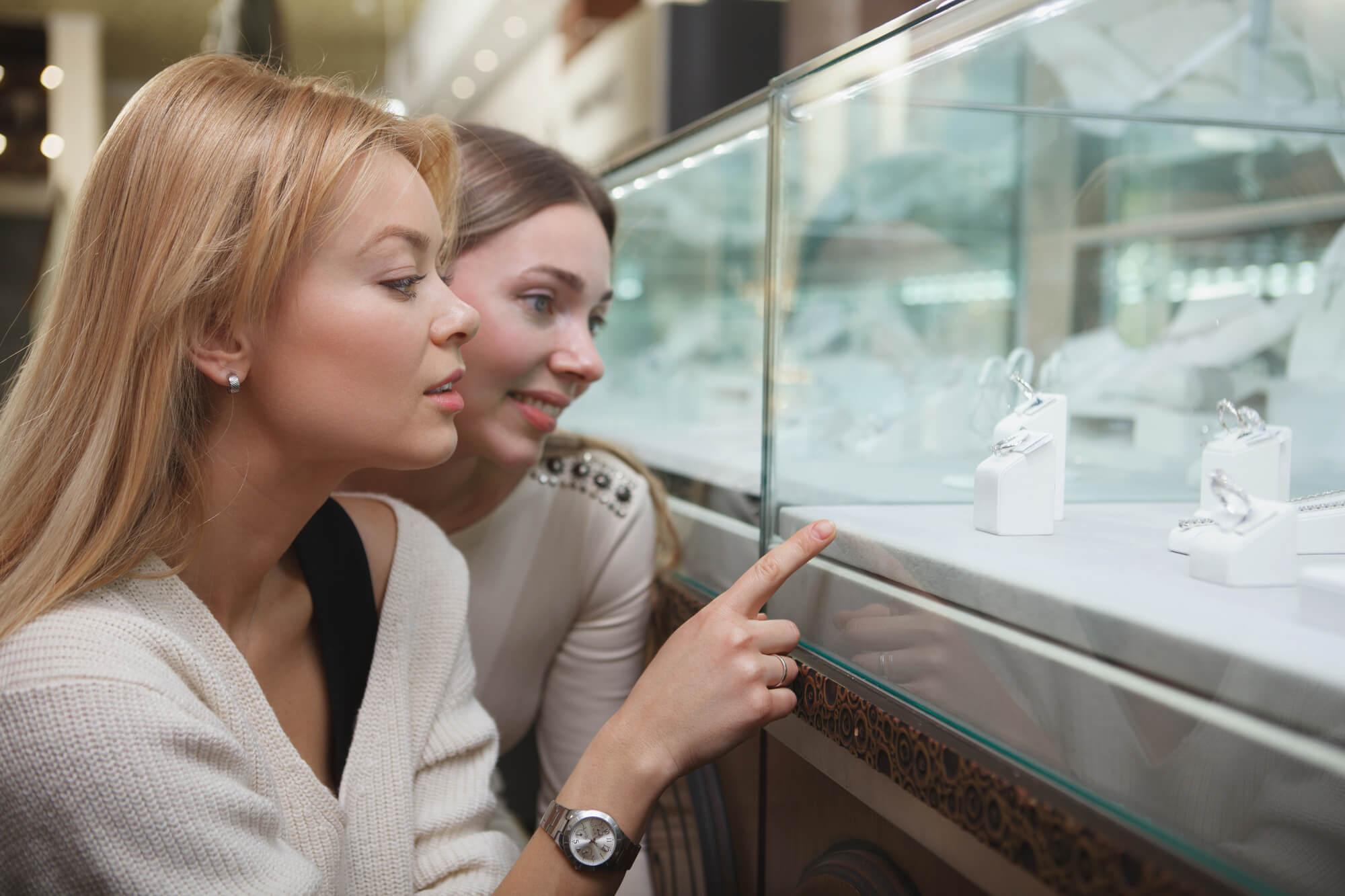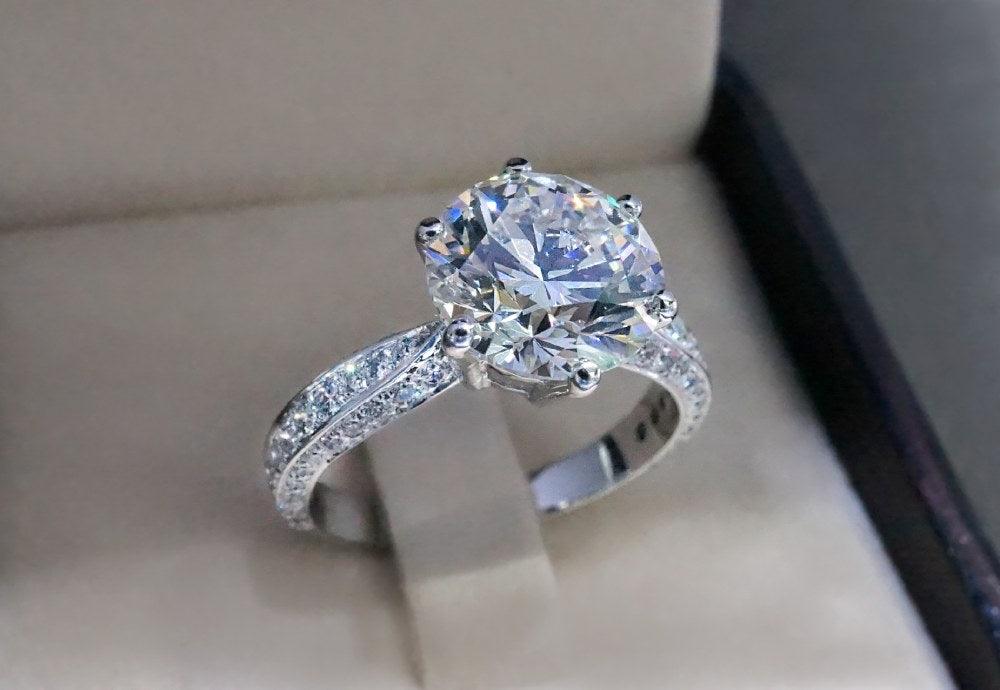
How to Choose a Diamond Engagement Ring Setting
Congratulations! As Grammy award-winning and record breaker Beyonce says, it’s time to put a ring on it.
As you take this milestone step forward into a bright and happy future, you may find that choosing the perfect engagement ring can be difficult and confusing.
You might feel like you need to master the 4 Cs and become an expert in diamonds, understand precious metal alloys, and how rings are designed and made. But don’t worry, that's our job as jewelers and we take our profession very seriously, so all you have to do is to take us seriously.
That being said, we understand how important and interesting this is for many people, and the desire to understand the subject.
In an effort to help you educate yourself, even if only to impress your nosy friends and judgemental relatives, we came up with our Engagement Ring Basics blog series. In each blog we have broken down one element of an engagement ring, so that it's easy for you to learn and retain the basic information that will make your ring purchasing experience a much more enjoyable, or at least a less confusing one.
In other articles in this series we have covered general ring anatomy, the 4 Cs, and precious metals such as white gold and platinum, and will be continuing with band styles, traditional yellow gold, and rose/pink gold, among other topics.
This article goes over what you need to know about engagement ring settings before you go ahead and choose one. If you want to skip right to an explanation of differnt setting options, please see the article on Setting Styles (Coming out Feb 28th)
What is a Ring Setting?
An engagement ring's "setting," can refer to two separate but related aspects of the engagement ring. A setting can refer either to the way in which a diamond is set into the ring or the prominent design feature of the ring in which the diamond is set.
Put another way, "setting" is used to describe both the way in which a diamond is mounted onto the metal band, and also the aesthetic style into which it is mounted.
For example, you can have a diamond set in prongs, and the setting style is also prongs; or you can have a diamond that is set in prongs, though the style of the setting is a cathedral (which uses prongs to hold the diamond, but has more intricacies in its design). A bezel setting is both an aesthetic style as well as a way of setting a diamond.
Sometimes the word "mounting" is used to describe otherwise empty settings in which there are no stones yet placed.
Why is the right diamond engagement ring setting important?
Settings are the main display and secure the diamond to the band. The phrase “presentation is everything,” is not far off from the truth when referring to how much a setting will impact the appreciation of your center diamond.
The ring setting is designed to display the gem and maximize its flattering characteristics, and potentially mask certain flaws. It determines how much light is distributed within the diamond, or diamonds, and at what angles the light enters and leaves the stone. Thus it also determines at what angles the stone is appreciable.
Certain diamond shapes will stand out better in some engagement ring settings than others, while on the other hand, some settings can detract from the center stone's vivacity. Some settings will mask blemishes and enhance other qualities in the stone.
And some settings wear better in certain circumstances than others, making lifestyle and wearability an important factor when choosing an engagement ring setting. For example, prongs can snag on hair or fabric, so a bezel setting might be better for someone with a very active lifestyle. We'll discuss this in further depth later on in this article.
Budget
Decide on your budget in advance of looking at options, especially as the budget will largely determine them.
A budget is one that you can afford to pay. The pop notion that you should be spending a certain amount on an engagement ring is a result of several (remarkably successful) marketing and PR campaigns DeBeers instituted in the 20th century.
How to pick the right Engagement Ring Setting?
Lifestyle
Perhaps one of the most important factors to consider before buying an engagement ring is the lifestyle you live, or will live, into which the ring must fit.
An engagement ring with a large diamond set delicately high above the band in a simple prong setting may be gorgeous but if you are a baker, not only will that ring end up being filthy at the end of each day, the powerful action of kneading dough may loosen the prongs holding the diamond, which might end up baked inside a baguette.
Simply put, some rings are better suited to certain lifestyles than others, so don't half-bake this part.

For people who live very active lifestyles and intend on wearing their engagement ring on a daily basis, or at least often, there are plenty of beautiful options for showcasing and securing your diamond. Some of the most popular styles for engagement ring settings that can contend with rigorous activity are bezel settings, channel settings, and burnish settings.
Wearability
The wearability of your engagement ring has slightly less to do with the lifestyle you lead or intend to lead, and more to do with how you intend to wear your ring.
Where and when do you intend to wear your ring, and how? What is your wardrobe like, and does your stone and setting type match? Do you want to wear a piece of fine art; or a big, fabulous and flashy diamond ? (Those don't have to be mutually exclusive.)
You might not intend on wearing your engagement ring all the time, and may want it for specific occasions and purposes, which can give you some added leeway in your engagement ring's design. Some rings are suited better for certain situations than others. Some people do not want to wear a ring that stands out all the time, while some people specifically do.
Stacking Your engagement ring and wedding band

If you are considering stacking your engagement and wedding ring, keep in mind that some settings will not work for that. Trio pavé set on either band will make stacking somewhat risky as it will rub against the other band and scratch the metal, or potentially loosen or scratch the stones.
In order to stack a wedding ring with an engagement ring that has a bulging bridge which is wider than the shank of the band, you will need to ensure that the wedding band follows with the contours of the engagemnt ring.
That goes for just about any ring where the band curves or widens. Just make sure that when you order your wedding bands, you take into account the shape of your engagement ring, and if necessary work with your jeweler to customize a wedding band that will stack well with itn.
What metal should you choose for your engagement ring setting?
Some metals will work better for certain diamonds. The most common type of metal used today is white gold, though yellow gold is still popular.
White gold and platinum are perfect for most diamonds, and will bring out the most light from white diamonds.
Yellow gold has a classic and timeless look, and warmer colored diamonds look better and brighter when backed by 14k or 18k yellow gold.
Rose gold presents a very unique and pretty tone and can add a lot of personality. It will also add some luster to warmer diamonds.
How are diamonds held in a setting?

The most common way of securing a gemstone in most settings are some form of prongs or claws. Most prong settings have four or six prongs, though that can vary depending on your preferences and the size and shape of the diamond being held. One advantage of settings that use prongs is that they tend to allow more light to pass through the stone, allowing more sparkle. However, this style also has its drawback, especially where active lifestyles are concerned.
There are plenty of other ways to secure a diamond and a number of engagement ring settings that feature unique ways of keeping your precious diamond secure.

One of the most popular settings that does not use prongs or claws is the bezel setting, where the center stone is placed into the band itself with a rim of metal above the girdle securing the diamond. They are one of the most protective settings, solidly locking in a diamond. Despite their very modern look, bezel settings are one of the oldest settings types, with a history that goes back several thousand years.
In a channel setting the diamond or diamonds are placed in a trench between two raised metal sides, one on either side of the band. Channel settings often look like a seamless line of solid, glittering diamonds. They look best when square or rectangular diamonds are used.
In a bar setting, flat bars of metal set horizontally on the band hold either side of a diamond, creating a very unique look.
Solitaire Settings versus Multi-stone settings

Solitaire rings are one of the most iconic and classic setting available for engagement rings. A solitaire ring is one where there is a single diamond center stone, without any side stones, pave, melee or other accent stones. One of the most common types of engagement ring setting, and one of the most popular styles, it is also one of the more versatile engagement ring styles. A solitaire ring can be adapted to most engagement ring setting styles and will look wonderful with any diamond shape.
With only a single center stone, a solitaire engagement ring looks beautiful with a simpler setting that draws focus to the diamond, such as a prong setting, or tension setting.
With a larger center stone, more intricate engagement ring settings, such as a cathedral setting, or a trellis will look fantastic. If you are working with a smaller diamond, a prong or claw setting with less metal may showcase the diamond best.
What is Pavé?

"Pavé," a french word that literally means "to pave," is characterized by small diamonds called melee diamonds (which are tiny diamonds smaller than .15 carats) laid in a group or line, in essence paving the ring.
It differs from a cluster setting both in that a cluster setting uses larger diamonds, and a cluster setting is a focal point of a ring as opposed to accenting that pave contributes. Some items may be entirely covered in pave, creating a seamless diamond crust and adding extra sparkle; or pave can be used to accent design features, or even strategically placed to improve the overall appearance of the center diamond.
What is a halo setting?

A halo setting is more of an accessory for a setting than a type of setting in its own right. Halo settings are rings of melee diamonds around the main setting on a ring. They are a lovely addition that can make a diamond look larger, add extra scintillation and extra sparkle.
There are so many variations of halos that it will be one of our upcoming blogs.
At Michael Gabriels
There are innumerable ways to set a diamond to a band and at Michael Gabriels we are happy to make the design that pleases you most.
Michael Gabriels is a third generation family run business. In addition to our wide ranging collection of lab-grown diamond jewelry, of which every piece can be customized, we specialize in fully bespoke fine jewelry, engagement rings and wedding bands.
Browse our unique collection or reach out to us today for the perfect lab-grown diamond engagement ring for you or your partner.



